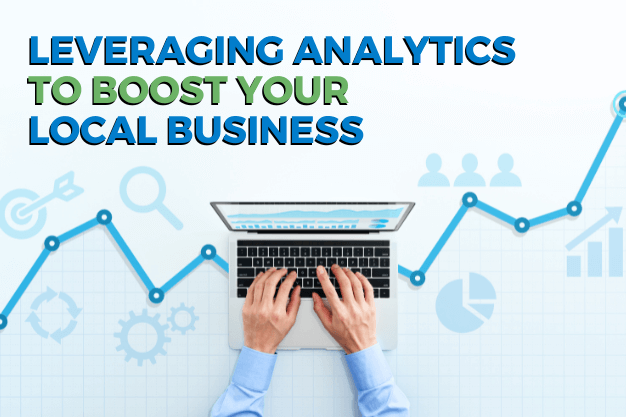Imagine unlocking secrets hidden within your website’s data—secrets that could skyrocket your local business’s growth and connect you more deeply with your customers. Google Analytics holds the key. Analytics, the science of analyzing raw data to make conclusions about that information, is at the heart of transforming these virtual footsteps into actionable insights.
This guide isn’t just another run-of-the-mill overview; it’s a deep dive into how local businesses can harness the power of analytics to not only survive but thrive in the modern marketplace. By moving beyond basic metrics, we’ll explore actionable, advanced strategies that offer real, tangible value and insights, propelling your business to new heights.
Understanding Analytics: Beyond the Basics
The term “analytics” might conjure images of complex charts and inscrutable data points, but at its core, analytics is about understanding. It’s about turning data—every click on your website, every purchase at your register, every call to your service line—into insights that can guide your business decisions.
Pro Tip: Start with the end in mind. Define what success looks like for your business. Is it more sales? Higher customer satisfaction? Once you know your destination, analytics is the map that shows you how to get there.
Setting Up for Success: Analytics Tools and Technologies
While Google Analytics is a powerful tool for understanding web traffic, it barely scratches the surface of what’s possible. Advanced tools like Tableau can transform complex datasets into intuitive, visual insights, revealing hidden patterns that can inform strategy. SEMrush offers deep dives into SEO and online visibility, helping businesses stand out in a crowded online space. Meanwhile, Sprout Social’s analytics can fine-tune social media strategies to increase engagement and reach.
Example: Consider a local bookstore that used Tableau to analyze their sales data. They discovered that while bestsellers brought people in, the higher margins on niche genres actually drove their profitability. By adjusting their inventory to feature these genres more prominently, they were able to significantly increase their bottom line.
Data-Driven Decision Making: Integrating Analytics into Your Business Strategy
Integrating analytics into your business strategy allows you to make decisions based on data rather than intuition. For customer insights, analytics can show you not just who your customers are but how they behave. This can lead to highly targeted marketing efforts. For sales optimization, analyzing your sales data can reveal trends and patterns that help you stock more intelligently and staff more effectively.
Pro Tip: Don’t just collect data; use it. Regularly review your analytics to identify trends and adjust your strategies accordingly. This could mean changing your marketing message based on customer response or adjusting your inventory based on sales trends.

Advanced Analytics Techniques for Local Businesses
As your comfort with analytics grows, so too can the sophistication of your techniques. Predictive analytics, geospatial analysis, and customer sentiment analysis are just the tip of the iceberg.
- Predictive Analytics: This involves using historical data to make predictions about future events. For a local florist, predictive analytics could forecast demand around major holidays, helping to optimize stock levels and reduce waste.
- Geospatial Analysis: This technique analyzes geographic patterns to inform decisions. A food truck business could use geospatial analysis to identify the most profitable locations and times, adjusting their schedule to capture more high-traffic periods.
- Customer Sentiment Analysis: By analyzing customer reviews and social media mentions, businesses can gauge public sentiment, identify areas for improvement, and highlight strengths. A local restaurant could use this analysis to tweak their menu or service based on direct customer feedback.
Example: A boutique clothing store utilized customer sentiment analysis to understand the reception of a new line. By analyzing feedback across social media, they were able to quickly adjust their marketing strategy to highlight the most popular features, significantly boosting engagement and sales.
Overcoming Common Challenges with Analytics
Data Overload: The sheer volume of data can be overwhelming. Prioritize metrics that align with your business goals, and don’t get sidetracked by vanity metrics that don’t contribute to your bottom line.
Skill Gaps: Not everyone is a data scientist, and that’s okay. There are numerous resources available, from online courses to analytics consultants, that can help bridge this gap. Additionally, many modern analytics tools are designed with user-friendliness in mind, requiring minimal technical expertise.
Privacy and Ethics: In the age of GDPR and CCPA, how you handle data is just as important as the insights it can provide. Ensure your data collection practices are transparent, and that you have explicit consent from your customers to use their data.

Future Trends in Analytics for Local Businesses
Looking ahead, the integration of Artificial Intelligence (AI) and the Internet of Things (IoT) with analytics promises to open new frontiers for local businesses.
- AI and Machine Learning: These technologies can automate routine data analysis tasks, provide more accurate predictive models, and personalize customer interactions at scale. Imagine a local bookstore where an AI recommends books based on a customer’s reading history, akin to a personal librarian.
- IoT: For businesses with a physical presence, IoT devices can collect data on foot traffic, customer interactions, and even environmental conditions. This data can be used to enhance the customer experience, improve operational efficiency, and reduce costs.
The journey into analytics for local businesses offers a pathway to not only survive in today’s competitive landscape but to thrive. By starting with clear goals, embracing the tools and techniques available, and continuously learning and adapting, local businesses can transform data into one of their greatest assets. Remember, the goal of analytics is not just to collect data, but to turn that data into actionable insights that drive decisions, foster growth, and build a sustainable competitive advantage.
Begin today by identifying one aspect of your business that could benefit from deeper insights. Whether it’s improving customer retention, optimizing your marketing strategy, or enhancing operational efficiency, take that first step towards integrating analytics into your business practice. The path to data-driven decision-making is a journey, but it’s one that can start with a single step. Embrace the power of analytics and let it propel your local business to new heights.

